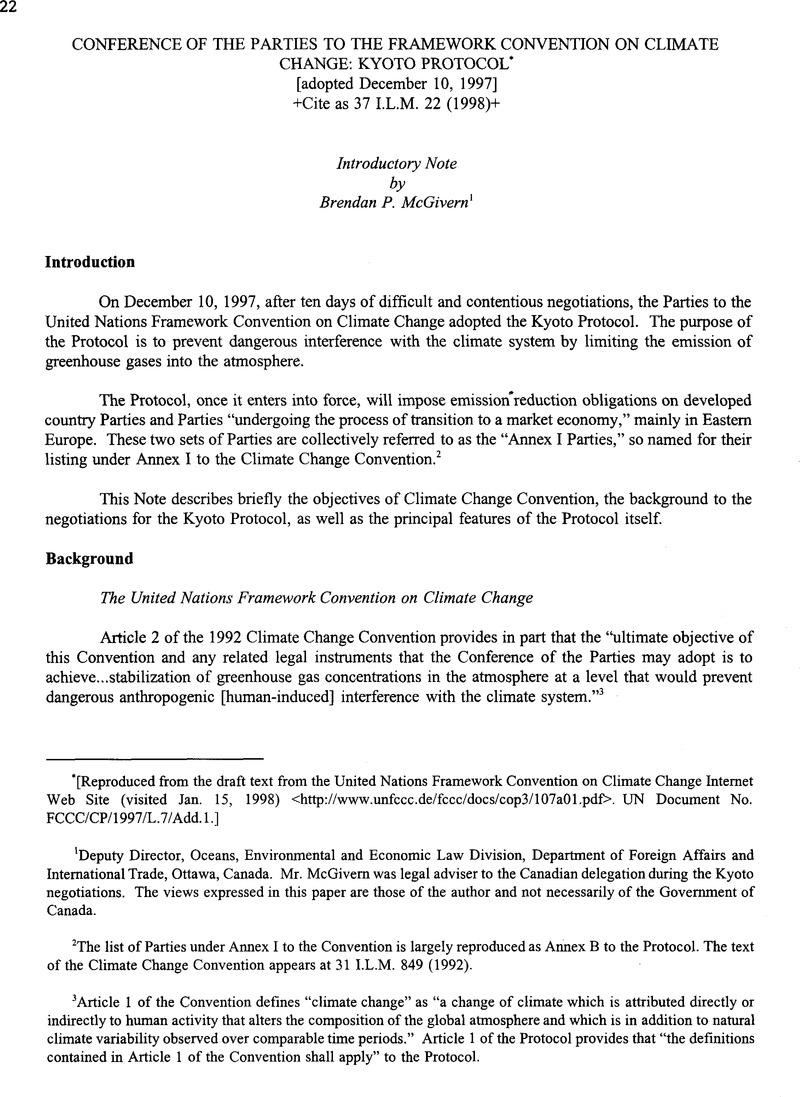Published online by Cambridge University Press: 27 February 2017

* [Reproduced from the draft text from the United Nations Framework Convention on Climate Change Internet Web Site (visited Jan. 15, 1998) <http://www.unfccc.de/fccc/docs/cop3/107a01.pdf>. UN Document No. FCCC/CP/1997/L.7/Add. 1.]
1 Deputy Director, Oceans, Environmental and Economic Law Division, Department of Foreign Affairs and International Trade, Ottawa, Canada. Mr. McGivern was legal adviser to the Canadian delegation during the Kyoto negotiations. the views expressed in this paper are those of the author and not necessarily of the Government of Canada.
2 the list of Parties under Annex I to the Convention is largely reproduced as Annex B to the Protocol. the text of the Climate Change Convention appears at 31 I.L.M. 849 (1992).
3 Article 1 of the Convention defines “climate change” as “a change of climate which is attributed directly or indirectly to human activity that alters the composition of the global atmosphere and which is in addition to natural climate variability observed over comparable time periods.” Article 1 of the Protocol provides that “the definitions contained in Article 1 of the Convention shall apply” to the Protocol.
4 the Montreal Protocol on Substances that Deplete the Ozone Layer [26 I.L.M. 1541 (1987)], a Protocol to the 1985 Vienna Convention for the Protection of the Ozone Layer [26 I.L.M. 1516 (1987)], as adjusted and amended. A “sink,” as defined in Article 1 of the Convention, is “any process, activity or mechanism which removes a greenhouse gas, an aerosol or a precursor of a greenhouse gas from the atmosphere.” Forests are an important type of sink
5 the Climate Change Secretariat estimates that this represents an actual reduction of about 30% over “business as usual” i.e. projected emissions absent any of the reductions imposed by the Protocol
6 A similar provision appears in Article 2.3 of the Protocol